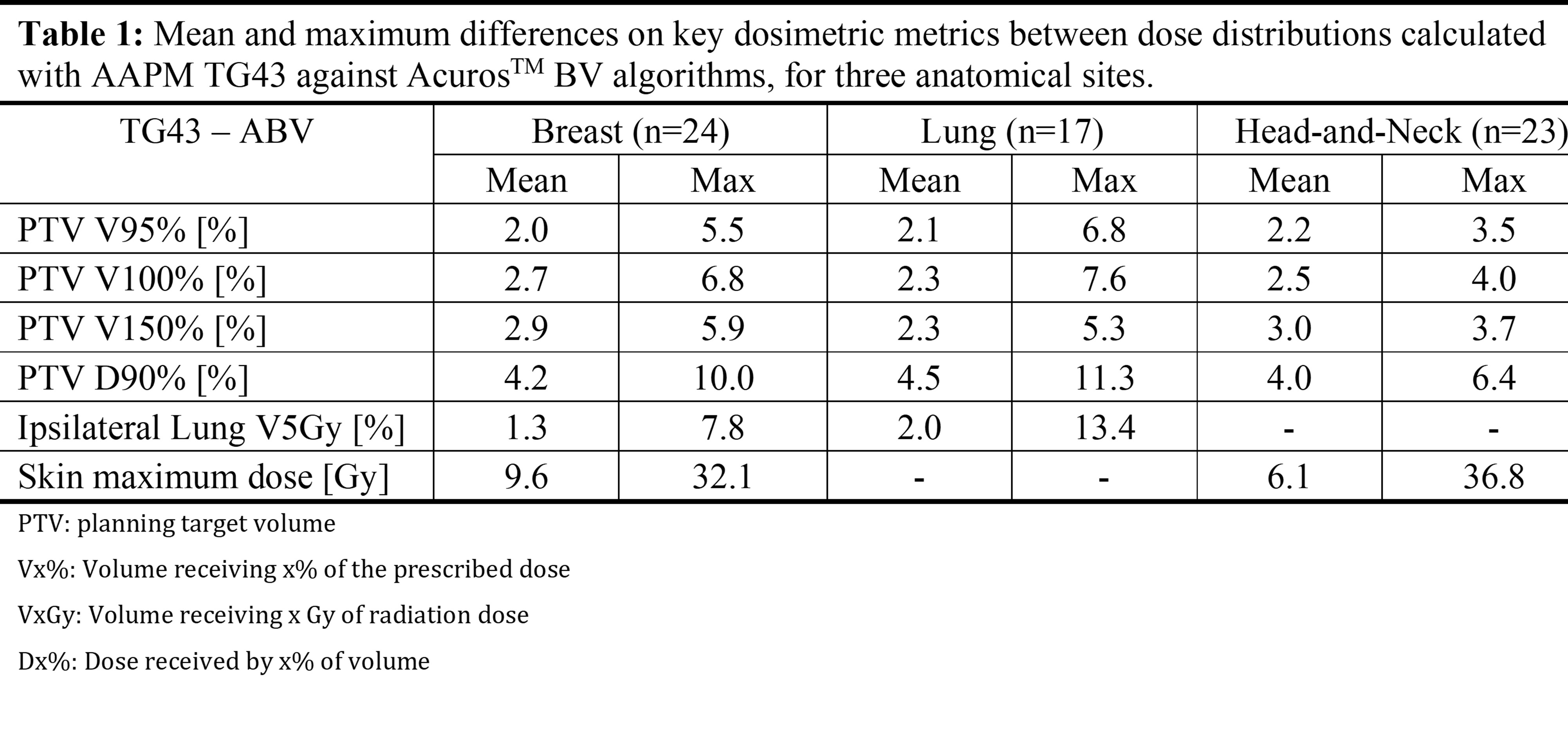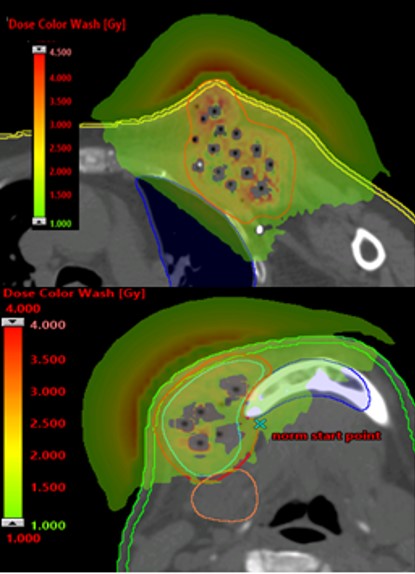Dosimetric comparison of AcurosTM BV and AAPM TG43 for interstitial HDR brachytherapy
Yiannis Roussakis,
Cyprus
PO-2170
Abstract
Dosimetric comparison of AcurosTM BV and AAPM TG43 for interstitial HDR brachytherapy
Authors: Yiannis Roussakis1, George Antorkas1, Leonidas Gerogiou1, Iosif Strouthos2, Efstratios Karagiannis2, Konstantinos Ferentinos2, Nikolaos Zamboglou2, Paul Doolan1, Georgios Anagnostopoulos1
1German Oncology Center, Department of Medical Physics, Limassol, Cyprus; 2German Oncology Center, Department of Radiation Oncology, Limassol, Cyprus
Show Affiliations
Hide Affiliations
Purpose or Objective
In contrast to the AAPM TG43, commercially available model-based dose calculation algorithms for brachytherapy account for the effect of heterogeneities, the catheter material and shape as well as the limited scatter conditions in bounded patient anatomy for dose calculation. Previous comparison studies have focused on the dosimetric differences within high dose-rate (HDR) interstitial treatment of the breast, but in this work, we also focus on head-and-neck and lung. A retrospective comparison was made between TG43 and AcurosTM BV algorithms, found in the BrachyVisionTM treatment planning system (Varian Medical Systems Inc., CA, USA). Differences of plan quality indices were computed for multi-catheter HDR brachytherapy implants in breast, head-and-neck, and lung, where the proximity of the treated clinical target volumes to bounded and/or heterogeneous anatomy raise a dosimetric accuracy concern.
Material and Methods
A total of 64 patients treated with interstitial HDR brachytherapy at our centre, were retrospectively assessed (24 breast, 23 head-and-neck, 17 lung). Treatment plans were created for each case using the TG43 algorithm and then re-calculated using the AcurosBV algorithm with the option of calculating dose to medium in medium. Dose volume histogram (DVH) statistics have been generated for each plan, concentrating on the coverage of the planning target volume (PTV) and clinically meaningful metrics for relevant organs at risk (OARs) such as skin and healthy lung. Maximum and mean deviations of these metrics between the two algorithms, for each anatomical site were assessed.
Results
Using TG43, increased dose coverage of the PTV was observed when compared to the AcurosBV dose calculation algorithm. Similarly, the dose in OARs was in most cases consistently higher with TG43. Table 1 presents the results for each anatomical site, listing mean and maximum deviations in key DVH metrics for PTV and OARs between the two algorithms. An illustrative example is shown in Figure 1 where the absolute dose distribution differences between the two algorithms are shown for two anatomical sites.


Figure 1: Distribution of dose difference, between the dose calculated by the AAPM TG43 and AcurosTM BV algorithms (TG43 – AcurosBV), for a breast (top) and a head-and-neck (bottom) case.
Conclusion
AcurosBV seemingly improves dose calculation for distances relevant in brachytherapy. For the PTVs a consistent increased dose is reported when using TG43, which is important when PTV coverage is considered. For head-and-neck and lungs, the TG43 calculated dose to adjacent serial organs and healthy lung tissue is also higher, which can in both cases potentially inhibit adequate target coverage. The findings of this work highlight that further work is required to correlate dose prescriptions to PTVs and dose limits to OARs, based on more accurate dose values achieved by recent model-based dose calculation algorithms.